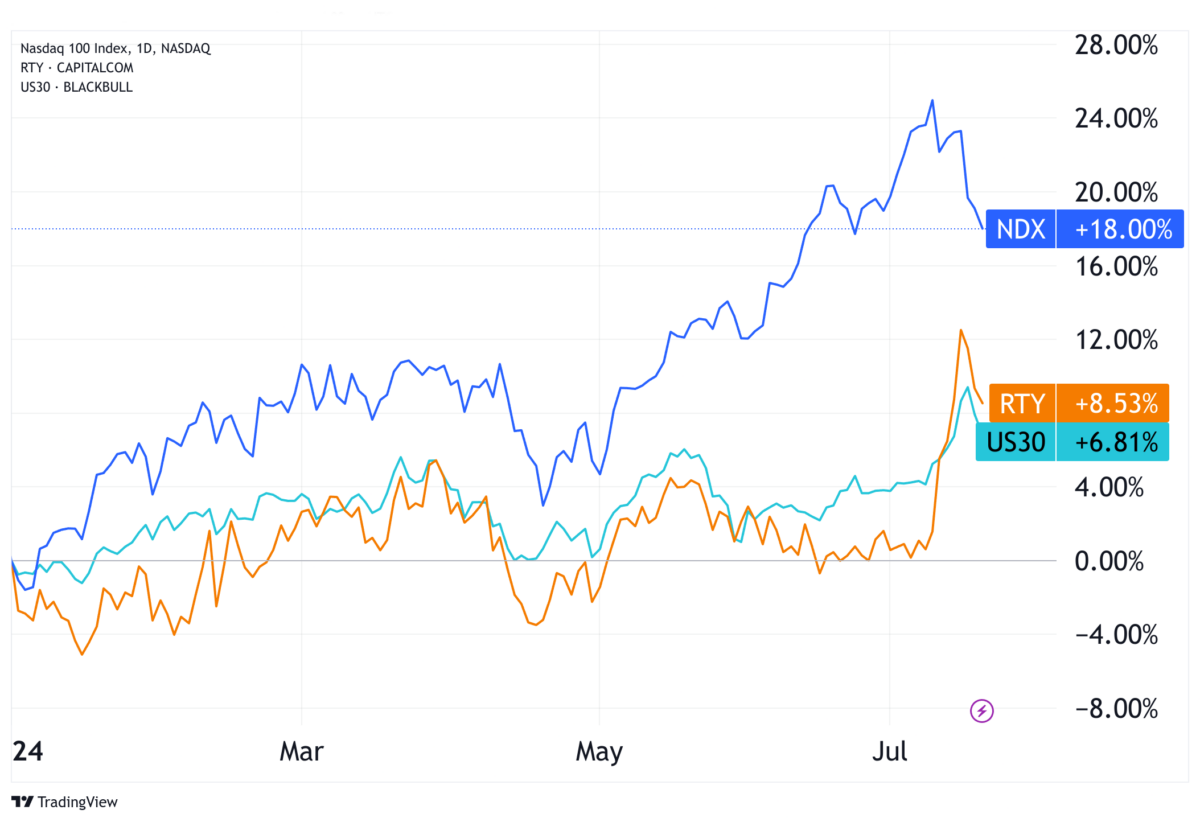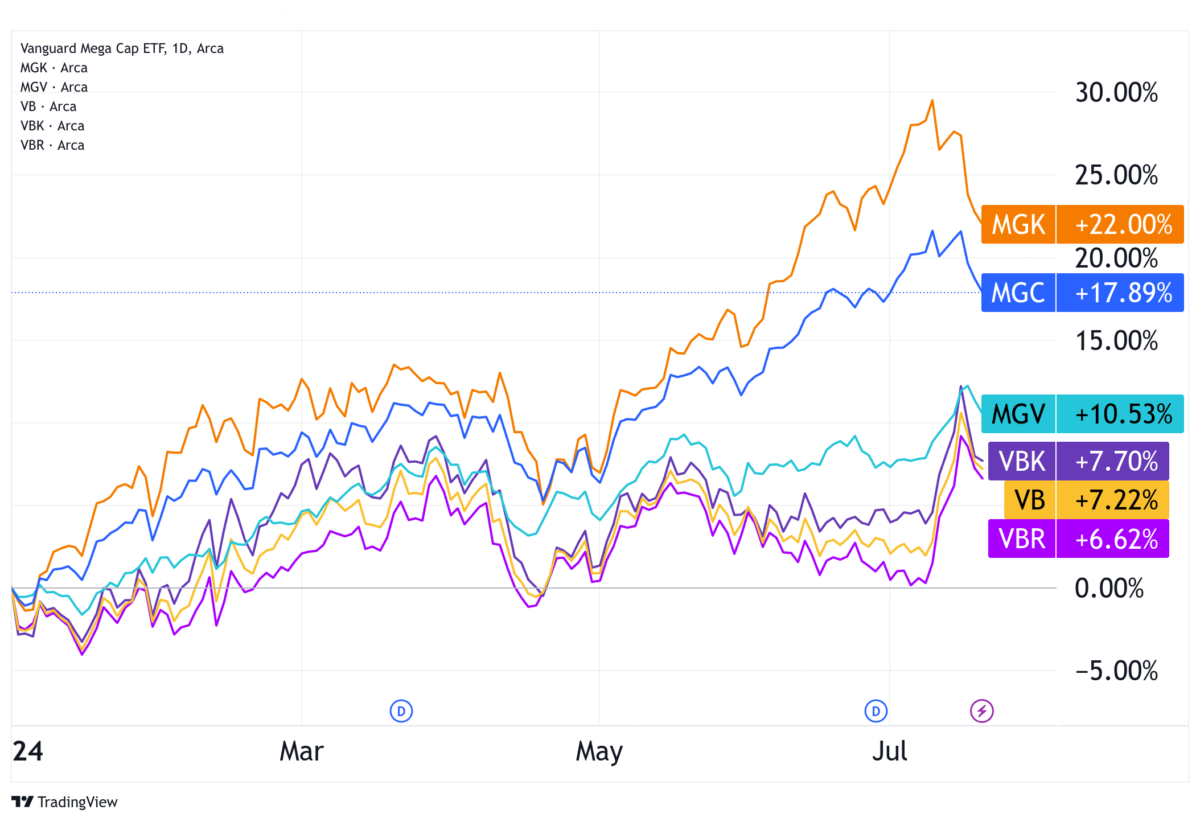Will There Be A Market Rotation?

Many strange things happened this year related to stock indices. On one day, the Nasdaq is rising strongly while the Dow is declining; on another day, it is the opposite; and on other days, both are declining while most investors’ portfolios are showing gains. This apparent disconnection happens for many reasons, with two of the most important being: 1) mega caps weigh too much on stock indices, and 2) the Dow is completely flawed.
The Dow (Dow Jones Industrial Average) is an imperfect gauge of stock market activity because it is composed of a very limited selection of large US companies. Besides its narrow focus, it is a price-weighted index, which lacks proportional representation and puts an overemphasis on high-priced stocks. The Nasdaq 100 isn’t free from problems either. If we cycle through the list of weights, we see the top two, Microsoft and Apple, represent 25% of the index. The so-called Magnificent Seven represent 51% of the index. Therefore, when we have a market skewed towards a few very large stocks like we had over the past few months, there can be a complete disconnection between what happens with these indices and investors’ portfolios. We witnessed several days when the Nasdaq was rising while a broader index like the Russell 2000 was declining. This year has been a year of complete disconnections, as the market rally hasn’t been broad-based. However, over the last few days, small stocks have been gaining traction while the Magnificent Seven are losing their appeal.

With interest rates at a peak and inflation above target, the megacap growth stocks have been benefiting the most. Companies like Apple, for example, which sit on a cash pile, do not suffer much from a contained rise in interest rates and can benefit from moderate inflation too. Over a five-year period, Apple is up 340%, Amazon 86%, Nvidia a stunning 2400%, and so on. The gains are huge. At the same time, compared with small caps, these gains are also disproportionate. For this reason, investors have been debating whether this rally in stocks is sustained or just the consequence of a few megacaps doing very well.

If we consider the above chart, it is evident what is driving profits for investors. Year-to-date, megacaps have dominated the landscape, rising 17.9%, which compares with 7.2% for small caps. However, even within megacaps, it is growth that is driving the results, as megacap growth rose 22% against 10.5% for megacap value. Over the last few days, we can notice a jump in all small cap ETFs (VB, VBK, and VBR), which has been attributed to better-than-expected CPI data, raising the odds for a September interest rate cut.
Small stocks, most of them cyclicals, have been operating under an unfavourable economic landscape, with high interest rates and moderate sales and growth. However, the better-than-expected CPI data offers the FED the opportunity to cut interest rates sooner and benefit small-cap stocks, which usually operate with a larger debt burden. The start of a new interest rate cycle will help extend the stock rally and help small caps fill the huge gap created in the recent past. However, this is a thin trade. I don’t believe we have just started a stock rotation, at least not a durable one to fill existing gaps. This is because, on one hand, small stocks benefit from the prospects of lower interest rates, but on the other hand, they suffer the most with any economic slowdown because, as I mentioned above, most of these stocks are cyclicals. Therefore, for a strong stock rotation to occur, we need lower rates in a still good enough economy. The latest jobs data points towards some deterioration, which, if it continues, may impair the prospects for small stocks. Even on the interest rate front, lower inflation means the rising rates are now deriving the expected effects, and the FED doesn’t need to hike them more. However, this is different from engaging in the opposite rate cycle of cutting rates successively down to zero or even two percent.
In summary, I believe there’s some gap for small stocks to fill, but I don’t expect a strong rally for small stocks for now. There will be, most likely, ups and downs, as investors are sensitive to economic data. Any degradation in the jobs market means lower interest rates on the horizon but a weaker consumer. And if economic conditions remain stable, there’s no hurry for the Fed to cut rates. There are reasons to pick up some small caps but to keep some mega caps at the same time, as while the former currently trade at a discount, the latter are still in a stronger position to keep profits going.
Comments (0)